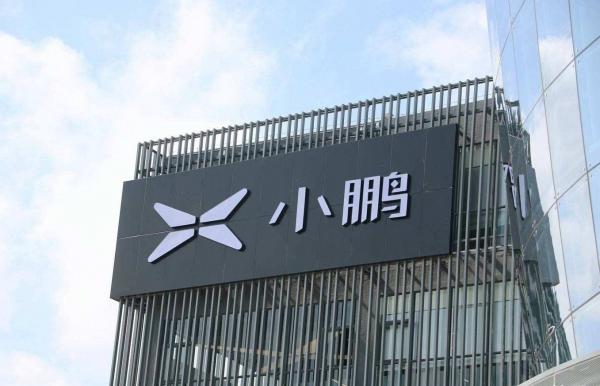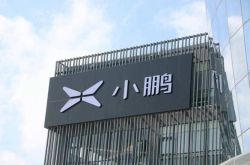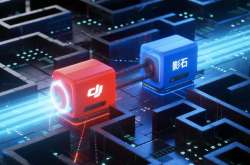AI XIN TIAN XIA | Hot Topics | Technological Breakthrough or Marketing Hype? XPENG's Female Humanoid Robot Launch Rocks the Industry
![]() 11/11 2025
11/11 2025
![]() 397
397
Foreword: As the spotlight shone brightly at the recent [2025 XPENG Technology Day], a robot with an elegantly designed female form glided onto the catwalk with a light and graceful step, momentarily leaving the audience in awe. However, within just 24 hours, this [eye-catching] debut transformed into a full-blown [real person or robot] controversy, sparking widespread internet debates over whether the robot was actually a human in disguise. This debate inadvertently became a lens through which to examine China's embodied AI industry.
Author | Fang Wensan Image Source | Network

From [Catwalk Sensation] to [Proof of Authenticity] in 48 Hours
The core of this controversy essentially boils down to a clash between technological realism and public perception.
Tracing the 48-hour timeline of the entire incident, each moment reflects the unique challenges faced by the humanoid robot industry.
At the Technology Day event, the debut of the IRON robot was intended to be a showcase of XPENG's [Physical AI] strategy.
According to on-site footage, this robot, standing at 178 cm tall and weighing 70 kg, didn't just walk robotically but truly strutted down the runway.
Its toes touched the ground first, followed by the heels, with its body weight shifting subtly from side to side with each step, and even a slight sway of the hips.
These human-like details left tech media in awe, exclaiming, "[For the first time, we've seen elegance in a robot]," but also planted the seeds for the ensuing controversy.
Some netizens took screenshots, pointing out the faint outline of IRON's [ears], resembling human ears, and the [overly deliberate] zipper design on its back, suggesting it was designed for easy dressing by a real person.
Faced with escalating controversy, He Xiaopeng released a response video on November 6th, skipping unnecessary explanations and directly proceeding with a dissection demonstration.
Staff members first had IRON raise its arms, showcasing the industry's smallest 16mm-diameter harmonic joint in its hands, proving its hand size was far smaller than a human's.
They then unzipped the back, revealing a clear view of the internal metal skeleton and wiring. He Xiaopeng even leaned in close to the robot, allowing the camera to capture the fan noise from its cooling system.
Finally, he addressed the ear controversy with a close-up, revealing that the so-called [ears] were actually two sets of highly sensitive microphone arrays for auditory interaction and environmental sound capture.
Later that evening, XPENG released another definitive proof video, showing IRON powered on and running. Staff members used scissors to directly cut open the flexible skin and bionic muscle layer on its calf, exposing the internal mechanical skeleton and actuators.
Amazingly, even with its leg structure exposed, IRON could still walk steadily down the catwalk. He Xiaopeng remarked in the video, "[This is the final proof that it's a robot. We hope everyone will believe that a robot capable of walking the catwalk was made by a Chinese company.]"
This [self-proof] eventually drew the attention of industry leaders. On November 7th, Tesla CEO Elon Musk mentioned the incident in an interview, stating, "[Tesla and Chinese companies will dominate the humanoid robot market. I deeply respect our Chinese competitors; they have many smart and hardworking people.]"
The [Human-like] Technology Behind IRON Robot
Behind the controversy lies IRON's groundbreaking progress in human-like technology.
To understand why it caused misunderstandings, we need to dissect its technological logic layer by layer, from the hardware architecture of skeleton-muscle-skin to the software system of brain-nerves.
① Hardware: An 82-Degree-of-Freedom Humanoid Body
The core challenge for humanoid robots is achieving human-like motion flexibility within limited weight and space.
XPENG IRON's solution is a configuration of 82 active degrees of freedom + 22 degrees of freedom in the hands, a figure that places it in the top tier globally.
Degrees of freedom, simply put, refer to the range of motion at a robot's joints. Humans have about 206 bones, enabling complex movements through joints. IRON's 82 degrees of freedom are concentrated in key motion areas.
The humanoid spine design is a core breakthrough. Traditional robots have rigid torsos, while IRON's spine features a segmented flexible design, enabling subtle movements like bending, twisting, and tilting, which are crucial for its catwalk strut with waist twists.
The shoulders use a ball-and-socket joint + transport stabilizer combination, ensuring a wide range of arm movements while maintaining stability during object handling.
The hands are the core of fine manipulation. With 22 degrees of freedom, they can perform actions like grasping, pinching, and twisting, such as holding a pen to write, opening a water bottle cap, or even organizing files.
These actions, previously only possible by humans or specialized robotic arms in industrial settings, highlight IRON's versatility.
More critically, IRON employs all-solid-state battery technology, achieving a balance between lightweight design, ultra-high energy density, and safety. This keeps the robot's weight at 70 kg while ensuring long battery life.
The application of all-solid-state batteries not only resolves safety concerns but also provides the physical basis for IRON's light gait. With a 30% weight reduction and 30% power increase, it can achieve delicate movements like [toe-first landing].
② Software: VLA 2.0's End-to-End Intelligence
If hardware is IRON's [body], then XPENG's second-generation VLA large model is its [brain]. This technology, defined as a [Physical World Large Model], is the core of IRON's [natural movement].
Traditional VLA models follow three steps: visual perception → language translation → action generation.
For example, upon seeing a cup, it first translates to [This is a cup to be picked up], then generates action commands like [reach out-grasp-lift].
This process not only has high latency but also easily loses visual details, such as the cup's material or placement angle.
XPENG's VLA 2.0 model eliminates the language translation step, achieving end-to-end generation from [visual signal → action command]. Just as humans instinctively reach for a cup without mentally reciting instructions.
This end-to-end capability significantly boosts IRON's reaction speed. Based on VLA 2.0, XPENG's [Xiaolu NGP] function has increased its autonomous driving mileage by 13 times. For the robot, this ability translates into dynamic adaptation.
For instance, when encountering sudden obstacles while walking, IRON can adjust its gait within 0.5 seconds to bypass them without complex command calculations.
During human interaction, it can directly generate guiding actions by visually capturing human gestures, without language instructions.
Additionally, IRON is equipped with three XPENG-developed Turing AI chips, delivering a total computing power of 2250 TOPS, equivalent to running 50 high-performance computers simultaneously, capable of real-time processing of multimodal data from vision, hearing, and touch.
③ Design Philosophy: The Necessity of Ultimate Human-likeness
He Xiaopeng provided a clear answer in interviews: "[Human-likeness isn't for aesthetics; it's for adapting to the human world.]"
Human living and working environments are designed based on the human form. Door handle heights, table widths, stair step sizes, and even clothing patterns are all tailored to humans.
If robots adopt non-humanoid designs, such as multi-legged or tracked forms, they would face limitations in these settings.
IRON's skeleton-muscle-skin design aims to seamlessly integrate into human environments.
IRON supports customization for different body types, allowing future adjustments in height and build according to scenario needs.
Simultaneously, human-likeness is essential for data collection. He Xiaopeng believes that for robots to learn human behavior, possessing a humanoid body is optimal.
Observing the world from a human perspective and mimicking actions with a humanoid form ensures the collected data has generalizability.
Why is XPENG, a Car Manufacturer, Betting on Robots?
To many, XPENG's foray into robotics as an automaker seems like [diverting from its core business].
However, robots are a crucial part of XPENG's [Physical AI] strategy, forming a full-scenario embodied AI ecosystem alongside cars, Robotaxis, and flying cars.
XPENG's core advantage lies in technological synergy. The software and AI aspects of robotics share a 70% reuse rate with its intelligent automotive business, meaning technologies accumulated in autonomous driving can directly empower robots.
For example, the VLA large model, initially developed for automotive autonomous driving to process road conditions and generate driving actions, can be repurposed for robots with parameter adjustments to handle walking environments and generate limb movements.
Similarly, the Turing AI chips, designed for automotive autonomous driving computing needs, can be applied to robots without redesigning the chip architecture, only requiring power optimization.
Even the [three-electric technology] from cars provides experience for the robot's power system.
This reuse not only reduces R&D costs but also accelerates technological iteration.
Automotive autonomous driving has accumulated 100 million clips of training data, equivalent to 65,000 years of human driving in extreme scenarios. This data helps robots adapt to complex environments more quickly.
Conversely, the complex control required for robots' 82 joints can refine automotive autonomous driving for more precise control.
XPENG has chosen a more pragmatic path, starting with commercial scenarios like guided tours, shopping assistance, and inspections.
IRON's first deployment will be in XPENG stores, handling guided tours and shopping assistance.
These scenarios offer advantages in being semi-structured, with relatively fixed environments, simple tasks, and gentle human interactions, allowing verification of the robot's interaction capabilities while avoiding risks in complex settings.
Simultaneously, XPENG is collaborating with Baosteel Group to explore IRON's application in industrial scenarios, though not for mass production yet.
Baosteel's inspection scenarios require robots to operate in high-temperature, high-dust environments to detect equipment failures.
This path of commercial first, then industrial, and finally household use contrasts sharply with Tesla's approach.
XPENG plans to release IRON's SDK in 2026, inviting global developers to jointly create application scenarios.
This means XPENG will act as a hardware platform provider, while developers create applications, similar to the relationship between Apple's iPhone and the App Store.
Additionally, XPENG is building an ecosystem for cross-scenario collaboration. For example, Robotaxi and robot linkage: When users arrive at a mall via XPENG Robotaxi, an IRON robot can greet them at the entrance and guide them to their destination.
Flying car and robot linkage: When users arrive at a scenic spot via flying car, IRON can serve as a tour guide, providing explanations throughout the visit.
Ending:
2026 is seen by the industry as the [Year of Mass Production for Humanoid Robots]. XPENG IRON plans to achieve mass production by the end of 2026, coinciding with Tesla's delayed Optimus production timeline, sparking a global mass production race.
Besides Tesla, Figure AI has deployed Figure 02 in BMW factories for pilot testing, with plans for commercial trials in 2024-2025. Apptronik is collaborating with Mercedes-Benz, targeting commercial production by 2026.
References: Zhiwei: [XPENG Robot Goes Viral, But Looking at Tesla Next Door, We Shouldn't Be Too Optimistic], Geek Park: [XPENG Technology Day is Too Surreal: Robots Walk the Catwalk, Flying Cars Near Mass Production], Phoenix Finance: [Accused of Being a Real Person in Disguise! He Xiaopeng Reveals Exclusively: What Makes Building Robots So Difficult?], Pencil News: [What Level is XPENG Robot At? Comparing with Global Robots, We Have the Answer], Pixel's Breath: [In-Depth Analysis: XPENG IRON Humanoid Robot - Technology, Controversy, and the [Physical AI] Strategic Landscape], Top Tech: [XPENG Robot [Proves] It's Not a Real Person, Dissects Bionic Structure, Reveals More Product Details]





